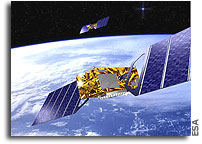Making the Galileo connection

On a humid afternoon in French Guiana, a small team of Spanish engineers watched as the second pair of Galileo satellites was launched, and the outcome of many years of effort ascended to the heavens. With a quartet of Galileo satellites in space and the second two undergoing in-orbit testing, Europe’s own satnav programme is nearing the time when the first navigation fixes can be tried out. It has taken the combined knowledge, capabilities and skill of companies both large and small from across our continent to reach this point.
This team, from Spain’s Mier Comunicaciones company, had contributed two key items to the twin satellites, launched on 12 October 2012: a new search and rescue transponder to pick up emergency distress calls from the ground or sea, and the Mission Receiver vital to maintaining Galileo’s positioning accuracy by picking up terrestrial correction messages.
“It was quite a striking moment to see the launch,” recalls Pedro Mier, CEO of Mier Comunicaciones. “We have been involved with Galileo since the very first pilot studies, but for these first four satellites in the constellation we held direct responsibility for key pieces of equipment. “To begin with, this second pair of satellites was the first to carry search and rescue transponders as part of the international Cospas-Sarsat system, picking up signals from emergency beacons on boats or aircraft in distress and relaying them to regional emergency centres.”
Cospas-Sarsat has been active for more than three decades, but Galileo’s transponders are a new departure for the system, operating in medium orbits for the first time, as opposed to low or geostationary orbits. They also have the first return link for Cospas-Sarsat, able to reply to stricken vessels that their SOS has been received and help is on the way. “We both designed and produced the transponder. Significantly for our company, this was the first time we delivered a complete satellite transponder,” adds Mr Mier.
“The design had to include very sharp signal filters and efficient amplifiers within the transponder to pick up faint VHF signals within a wide satellite footprint, and all within a compact size and mass. “It also had to be compatible with both Galileo satellite designs – the initial as well as follow-on Full Operational Capability satellites. “But the single greatest challenge was undoubtedly the extremely challenging schedule: in order to fly we had to design, qualify and produce the transponder in less than 14 months. It was very demanding but we did it!”









